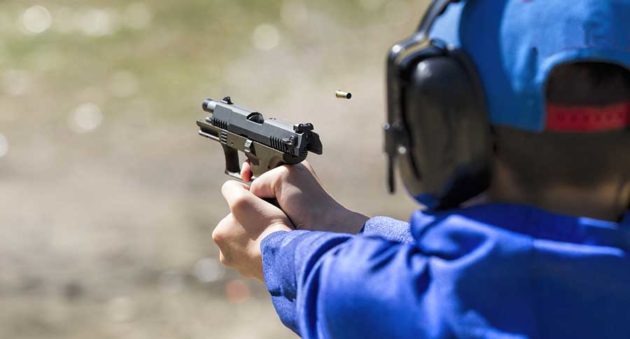
The other day I tried out a new skill. I went to the gun range.
As with any new skill, there was a learning curve to get up to speed. I received as crash course on the fundamentals of how to shoot. Top hand positioning, grip, how to wrap the left hand, footwork, how to line up your shot – to name a few. Every time I picked up the gun, I went through a mental checklist. One by one, I made sure my grip and my base were good. I extended my arms, took a deep breath, and got locked in on my marker. If I didn’t feel calm, relaxed, and in control, I didn’t take the shot.
If you’ve never shot a gun before, one of the most intimidating parts isn’t pulling the trigger. It’s bracing for what happens after you pull the trigger: The recoil. You can anticipate what it’s going to feel like, but you don’t really know what to expect until you take your first shot. As a result, you have to prepare accordingly. How you position your body to take the shot doesn’t just impact the shot. It impacts how you handle the residue from the shot.
This is where I drew a pretty cool parallel to baseball.
To put yourself in a good position to handle the gun recoil, you want to turn your body into a giant shock absorber. The gun is going to find the point of least resistance. This is often where we are uneven, most tense, or too rigid. As a result, we need to release some tension in our set up. Both arms should be extended, but the elbows should have a slight bend. When they’re extended or flared up, there’s no room to absorb any kind of energy. The springs are too rigid.
The same logic applies to your knees. Instead of standing with your legs locked, the knees should have a slight bend and should be relaxed. If they’re too stiff, you’re going to lose your base after the shot. You don’t have any room for error to absorb the recoil.
If you’re able to check both of these boxes in your set up, you should have a minimal recoil from the gun. The less your gun kicks up or down after release, the more consistent your shots are going to be.
Going through this process made me think a lot about baseball. From a big picture perspective, we’re trying to do exactly what I was focused on when I took my first shot: We’re trying to turn our body into a giant shock absorber. If we want to put a lot of energy into the baseball, we need to be able to absorb that energy after release. This depends on where and when we create tension, the positions we move to and through, and how much of the system we’re able to recruit when it’s time to decelerate.
Just like shooting, stress is going to find the weak link in the chain. If we can’t decelerate our pelvis, pull out slack, or get to positions of leverage, that stress is going to migrate towards the most vulnerable parts of our body. Discomfort isn’t random. It’s our feedback on the areas of our body which are taking on the brunt of the load. If you don’t address the problem when it’s whispering, you’re going to have to deal with it when it starts barking.
